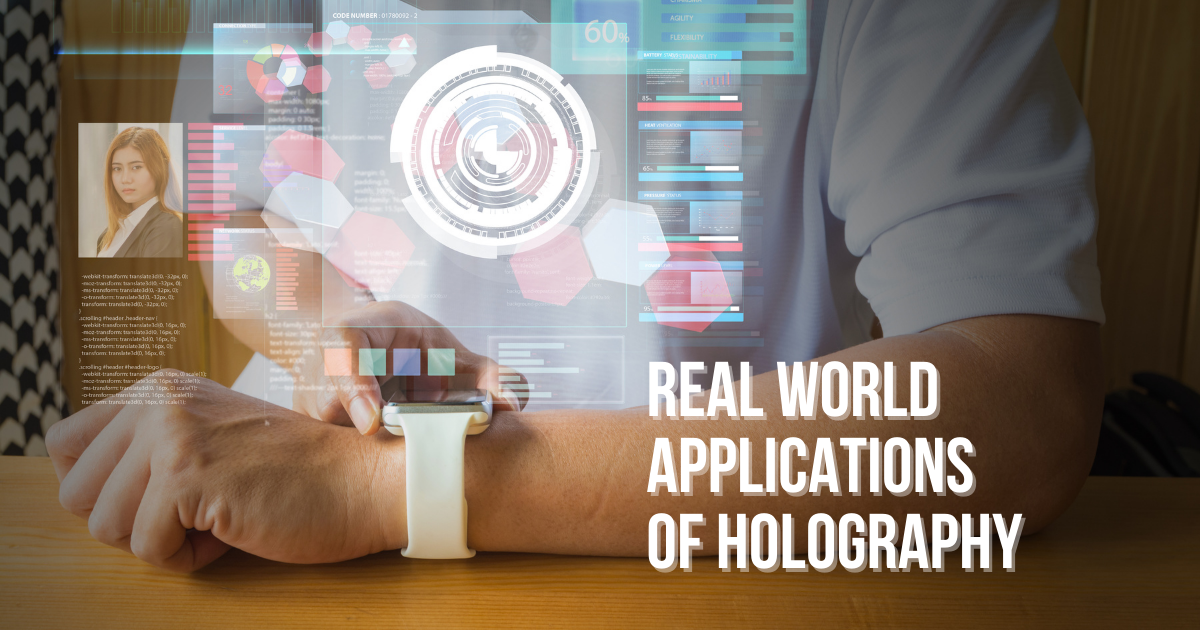Discover the Real-World Applications of Holography in 2025
Holography is no longer just a futuristic concept seen in sci-fi movies or flashy concerts. It’s becoming an essential part of various industries, offering new ways to experience entertainment, enhance medical practices, and transform how we interact with information. But what exactly are the real-world applications of holography? Let’s dive deep into this fascinating technology and uncover how it’s shaping the future.
Table of Contents
The Evolution of Holography

The concept of holography has evolved dramatically since its inception in the 1940s. Hungarian physicist Dennis Gabor’s invention of holography was based on the principles of light interference, laying the foundation for the 3D images we see today. Fast forward to the 1960s, when Theodore Maiman’s invention of the laser revolutionized the process, making clearer and more detailed holograms possible. As time progressed, holography gained traction, becoming a part of popular culture in films and exhibitions, all while continuously improving and expanding its applications.
How Does Holography Work?
Holography is a technique that captures and recreates the light waves reflected off an object to generate three-dimensional images, providing a realistic and immersive representation of the object’s appearance. Let’s break it down into simple points:
Laser and Coherent Light
A laser emits coherent light, which is essential for producing high-quality holograms. Coherent light means all the light waves are synchronized, which allows the creation of sharp, clear images.
Splitting the Laser Beam
The laser beam splits into two: the object beam (which illuminates the subject) and the reference beam (which bypasses the subject). The object beam carries information about the subject’s shape and texture, while the reference beam goes directly to the recording medium.
Interference Pattern
When both beams meet, they create an interference pattern. This pattern encodes the information about the subject and is captured on a photographic plate or digital sensor.
Reconstructing the Hologram
When the recorded interference pattern is illuminated by coherent light, it reconstructs the light waves that were reflected from the object, creating a lifelike 3D image.
This principle of holography enables the creation of images that appear to float in space and offer accurate depth and perspective. It’s the science behind everything from futuristic movies to complex medical imaging.
Real-World Applications of Holography

Now that we understand how holography works, let’s explore its remarkable applications across various fields:
1. Entertainment: Bringing Characters to Life
Holography has revolutionized the entertainment industry, offering viewers a chance to experience life-like holographic performances. Artists like Tupac and Elvis have been brought back to life on stage through holographic technology, creating memorable performances that were once thought impossible. Additionally, films and TV shows use holograms to enhance storytelling with dynamic, realistic effects. Even video games and theme parks use holographic projections to deepen immersion, bringing interactive environments to life.
2. Automotive Industry: Visualizing the Future of Cars
The automotive industry is another sector benefiting from holography. Car manufacturers are using 3D holograms for design and prototyping, making it easier to visualize vehicle models before they are built. On the consumer side, holographic displays in car showrooms provide a way to explore vehicle features in a more interactive way. Meanwhile, holographic dashboards and windshields offer drivers real-time data and enhanced navigation systems.
3. Medical Field: Improving Precision in Healthcare
In medicine, holography is proving invaluable. Surgeons can now access 3D models of organs, providing better visualization during complex surgeries. Additionally, medical education is becoming more interactive, with holographic anatomy models helping students understand the human body in a more tangible way. Even telemedicine is advancing with the use of holograms for virtual consultations, allowing doctors to engage more effectively with patients. This is all made possible by the ability to display images in three dimensions.
4. Education and Training: Hands-On Learning in 3D

Holography is transforming education by providing interactive 3D visualizations of complex subjects. For example, medical students can view the human body in intricate detail, enhancing their understanding of anatomy. Vocational training also benefits from holography, allowing students to practice real-world scenarios in a safe, virtual environment. Language learning can also be enhanced with interactive holograms, enabling students to practice with virtual characters in realistic settings.
5. Military and Defense: Enhancing Situational Awareness
The military is leveraging holography to improve strategy and situational awareness. 3D maps and holographic displays provide soldiers with precise terrain visualization, enabling them to make more informed decisions. In training, holographic simulations replicate real-life scenarios, allowing military personnel to rehearse tactics and improve their decision-making under pressure. Additionally, real-time holographic communication ensures that military teams stay connected and informed, even in the heat of battle.
6. Advertising and Marketing: Engaging Consumers Like Never Before
In advertising, holography has opened up new ways for brands to engage with consumers. Holographic product displays offer a highly interactive experience, where customers can explore features in three dimensions. Brands are using holograms at trade shows, creating memorable and eye-catching presentations. As the technology evolves, marketers are finding new ways to tell stories through holograms, creating emotional and impactful connections with audiences.
7. Scientific Research: Unlocking Complex Structures
Holography is a critical tool in scientific research. Its ability to visualize micro and nanostructures without the need for physical intervention makes it invaluable in fields like biology, physics, and environmental science. Researchers use holograms to observe cellular processes, study light behavior, and monitor pollutants in the environment. With ongoing advancements, holography will continue to assist in groundbreaking scientific discoveries.
8. Security Measures: Enhancing Protection
One of the most promising applications of holography is in security. By creating intricate 3D designs on identification documents like passports or credit cards, holograms make it nearly impossible to duplicate them. In surveillance, holographic technology offers advanced monitoring systems that provide a 3D view of surroundings, enhancing threat detection. As holography advances, it will play a larger role in strengthening security across various sectors.
The Future of Holography: What’s Next?

Holography is still evolving, and its potential seems endless. In the future, we might see holograms that allow us to interact with virtual objects and people in our own homes. For instance, entertainment could become more personalized, with concerts and performances tailored to the viewer’s preferences. In medicine, holograms could aid in real-time surgeries, giving surgeons highly accurate 3D visualizations during procedures. Education could also benefit, with fully interactive holographic classrooms enhancing student engagement and understanding.
The integration of artificial intelligence with holography will likely create more personalized experiences, where the holograms adapt to users’ feedback and preferences. Additionally, industries like real estate, retail, and tourism may use holograms for virtual property tours, product demonstrations, and immersive travel experiences. It’s clear that the future of holography is incredibly promising, with limitless possibilities.
Ethical Considerations in Holography
As holography continues to integrate into society, there are important ethical issues to consider. Privacy concerns are among the most pressing, as the technology could be used for surveillance or unauthorized representations of individuals. Additionally, the ability to create hyper-realistic holograms poses a challenge to authenticity and trust. Manipulated holograms could blur the line between reality and fiction, raising questions about intellectual property and the ownership of digital images. Finally, equitable access to holographic technology will be crucial to ensure it doesn’t exacerbate social inequalities.
Holography is Shaping the Future

Holography is a groundbreaking technology with transformative potential across industries. Whether it’s revolutionizing entertainment, enhancing healthcare, or changing the way we learn, holography offers a new way to interact with the world. As the technology continues to evolve, its applications will only become more widespread and impactful. We are standing on the brink of a holographic revolution that will redefine how we experience reality.
1. What is holography used for in medicine?
Holography in medicine allows for 3D visualization of organs and tissues, improving the precision of surgeries and medical diagnoses. It also enhances medical education through interactive anatomy models.
2. How is holography used in advertising?
Holography is used in advertising to create interactive 3D product displays, trade show presentations, and immersive brand experiences, capturing consumer attention in ways traditional advertisements cannot.
3. Can holography be used for security purposes?
Yes, holography enhances security by creating complex, difficult-to-replicate 3D designs for identification documents, making them more resistant to forgery.
4. What are the ethical concerns surrounding holography?
Ethical concerns include privacy issues, the manipulation of holographic images, intellectual property rights, and ensuring equitable access to the technology.
5. What does the future hold for holography?
The future of holography includes applications in entertainment, medicine, education, and various other industries, with potential for more personalized and interactive holograms powered by artificial intelligence.





